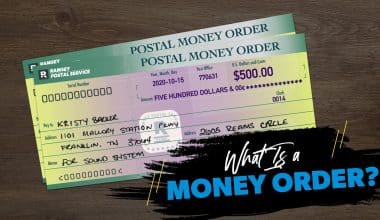It’s usually a huge put-off whenever I go through the “About Us” page of a website, only to find strings of irrelevant stuff. I generally conclude that it’s either these individuals are oblivious of the relevance of creating a brand story or rather do not know how to write a brand story. However, if you are here reading this post, it means probably by some miracle you survived an asteroid hit and suddenly realized the importance of building a brand story.
This post is designed to ensure you fully understand the importance of building a brand story that provides a basis for writing.
But for formality’s sake, we will have to start from the basics. And that begins with the question;
What is a Brand Story?
A literal -or rather myopic- definition would be “a story behind a brand.”
If that’s what you thought, don’t fret!!! I was there once.
However, there’s more to a brand story than just a story behind a brand. Realizing this early enough gives you a basis for creating a brand story that further inspires writing a brand story the right way.
So a more in-depth definition would be that; “A brand story is a narrative that encompasses personality, facts, feelings, and voice, triggering an emotional response.”
Why is Building a Brand Story Necessary?
If you understand how essential branding is, you would automatically recognize the necessity of building a brand story. Besides, branding is incomplete without a brand story.
According to President of Astonish Media Group, Paul Conway, “A brand story is a message that creates a powerful emotional connection between your company, customers and the general public -even when they have not tried the brand experience.”
So, whether a customer buys from you or your competition is dependent on this powerful emotional connection. And only a brand story can get you that connection you seek.
Most importantly, though, a brand story gives your business credibility, inspires trust and loyalty.
With that out of the way, below are important points to keep in mind when creating and writing a brand story.
Who Are the Creators of Your Brand’s Story?
It is wrong to believe that after you have written a narrative, you have completed your brand story. The rest of your brand story is what your customers write about it – how they feel, their experiences, social media debates, and so on.
Have you ever wondered why brands are so adamant about getting their customers to remark and provide feedback? They are searching for more than just assurance that their organization provided good products or services. They are also looking for ways to expand on their brand story by inciting debate and ensuring that the word gets out.
In a world where information flowed only one way from the corporation to the consumer, reversing the direction is revolutionary. People thought of enterprises as something ethereal a decade ago. They saw them as machines that provided goods in exchange for money. Customers nowadays understand their worth. They understand that corporations battle for every client since their strength is based on their word.
Your Opinion Counts
On the other hand, it is also wrong to believe that businesses are helpless. They can still direct their brand’s story by establishing a mission. Customers should be aware of the values held by their favorite companies. Every brand should build its unique voice for this purpose.
Have you ever wondered why Apple stores always have long lines of customers waiting for their new goods each year? They may not sell low-priced products, but it appears that a huge amount of people are willing to part with their money (and a lot of it) for a brand-new iPhone. The company stands for innovation. They persuade consumers that by acquiring Apple products, they are also innovative. People buy their products because of the message the firm delivers, the voice it has, and the appearance of exclusivity it provides, even though they offer one-of-a-kind technologies.
Thus, in order for your product or service to sell and your business to survive, you must talk to your current and potential clients in a clear voice that identifies a social component behind your business. This voice will communicate to their hearts and brains, causing them to feel, experience, and know that your company values, interests, goals, and wants. In most circumstances, this voice is more important than the price and availability of the goods. People will want your products because they are emotionally connected to your brand.
Read Also: HOW TO BUILD A STRONG BRAND IDENTITY
Creating a Brand Story (What You should Know Before Writing)
The following are important pieces of information you should know before going ahead to write a brand story.
#1. Figure Out Why Your Brand is in Existence
Figuring out why your business was created in the first place is the foundation for creating a brand story. Using your history largely aids this thinking process.
However, the basic problem is most brands were just built for profit and nothing more. But answering the following questions sets things into perspective.
- Why does this brand exist?
- What problem are we solving?
- How are we contributing to the world?
- What was the motivation from the on-set?
- What is our mission?
#2. Understand Your Brands and Products
To be effective in building or writing a brand story, you need to understand where and how your product fits into the story –keeping your audience in mind. There must be a connection between your story, product, and audience.
And like, Paula Conway, President of Astonish Media Group, says, “Lack of self-awareness in the product is one of the biggest mistakes brands make when it comes to their story.” “You don’t sell a Kia the same way you sell a Mercedes. They are both cars, but with different performance, price point, quality, and experience expectations.”
Read Also: SECRET FACTS ABOUT TOP BRANDS 2022
#3. Identify and Understand Your Target Audience
Identifying and understanding your targeted audience is vital to creating and writing a brand story. It is imperative first to know who your story is meant for if you would ever make any connection. Besides, it’s basically impossible to reach out to everyone. There is a particular set of individuals meant for your product and story.
Find them, get to know them, understand their passions, and their pains. That gives you a foundation for creating a brand story that they can actually relate to.
Furthermore, asking these questions below gives you a starting point.
- Who is my ideal audience/market?
- How do they interact with my brand?
- How do they describe my business?
- What problems do they face, and why is my brand the solution?
- Will my story connect?
- Will they buy into my story?
Although, trying to narrow down to your ideal market/audience could be very daunting, but, trust me, it’s worth the trouble. It’s the only way to build a brand story that resonates.
#4. Make It Attractive
Making your story human is the best approach to make it attractive. It is best to begin with the motives, impulses, emotions, and desires that will allow your customers to perceive the people behind your business rather than just the firm itself. Convey your passions or the struggles your company has faced that have shaped the brand. Describe how the business concept was affected by clients and their experiences.
You might add case studies or employee tales to your story to make it more personable. You can use it as leverage for your brand narrative depending on what you value the most in your organization.
#5. Investigate Storytelling
Storytelling is a type of writing that employs particular techniques. To write your brand story, you must first understand what common storylines have in common. You should start with the primary characters, then add some crucial elements to hold your audience’s attention and finish with a revelation.
It’s a positive sign if your tale entices your audience to keep reading. It’s even better if your tale inspires potential clients to learn more about your company. As a result, you must emphasize your story’s conflict in order to capture the reader’s attention and keep them on the edge of their seats.
You do not need to cook up a lengthy story. Make your readers move from the conception of your business concept to the status quo. Determine the primary characters and empower them by stating your company’s ideals aloud. When you’re finished, read your story aloud to ensure it flows.
#6. reate Your Main Characters
It’s fine if your true story doesn’t have a real character to model it on. It can be told through the eyes of a fictional character. You may give them whatever voice or role you desire while still delivering the facts about your company. Consider Ronald McDonald from the perspective of McDonald. He is a fictitious figure who has been serving as a brand storyteller for decades, long before content marketing became important in marketing.
#7. Include Visuals
You must make your tale live in order for it to be ingrained in the brains of your customers. You can communicate more effectively and help people retain information better by including photographs and other visuals. Consider the cavemen, who communicated visually long before languages evolved. Remember that whenever you feel your point is weak or your story is lacking in emphasis, you can add images to make your message more vivid.
#8. Maintain Consistency
Try to be consistent with each value you profess to hold. Customers are adept at detecting dishonesty, therefore it is best to maintain consistency. You should prevent any contradictions that may cause your customer to become confused. Keep in mind that he or she will be relying on their senses. If people believe you have betrayed their confidence, you are likely to lose a portion of your audience.
#9. Make an Impact
Customers care a lot about how you intend to make a difference. It’s a positive sign if your brand story alluded to prevalent social issues that were solved within your business. It would be even great if you could explain how you try to make the world a better place by resolving problems at the local level.
Read Also: CREATING A BRAND THE APPLES WAY
#10. Start Writing Your Brand Story
The final step is implementation. This is achieved by building your brand story around these points above with a notepad and a pen.
It doesn’t have to be fancy or interesting; it just needs to be simple, authentic, and a true reflection of your brand.
How Do You Write a Brand Story?
Here are a few tips to follow when writing a brand story;
- Add some personality.
- Keep your story as simple as possible.
- Concentrate on the Reasons for Your Brand’s Existence.
- Make Contact With Your Customers.
- Customers want to hear your story, not just your products.
- Encourage Others to Tell Your Story.
What Is a Brand Storytelling Example?
Nike is an example of employing brand storytelling to connect with an audience, urging them to join a collective movement by wearing Nike items or, at the very least, connecting on social media, such as sharing one of the company’s constantly inspiring movies.
What Are the Elements of a Brand Story?
The five important parts of brand storytelling are discussed below: consistency and authenticity, recognizing your target, communicating the problem you solve, establishing your character, and connecting with your community.
What Should a Brand Story Include?
A brand story usually tells where the brand came from, what its mission or purpose is, and what its values are.
What Is a Core Brand Story?
Your business’s Brand Core Story is the main story about what you stand for, where you do business, and who you serve. Your business’s strategies are built around the core story of your brand. describes how people inside and outside your company see your brand.
Conclusion
If you play your cards right with points above, striking a chord, stirring up emotions, and writing a brand story, the right shouldn’t be a problem.
But, just in case you need more clarifications, you can get back to us on the comment box.






